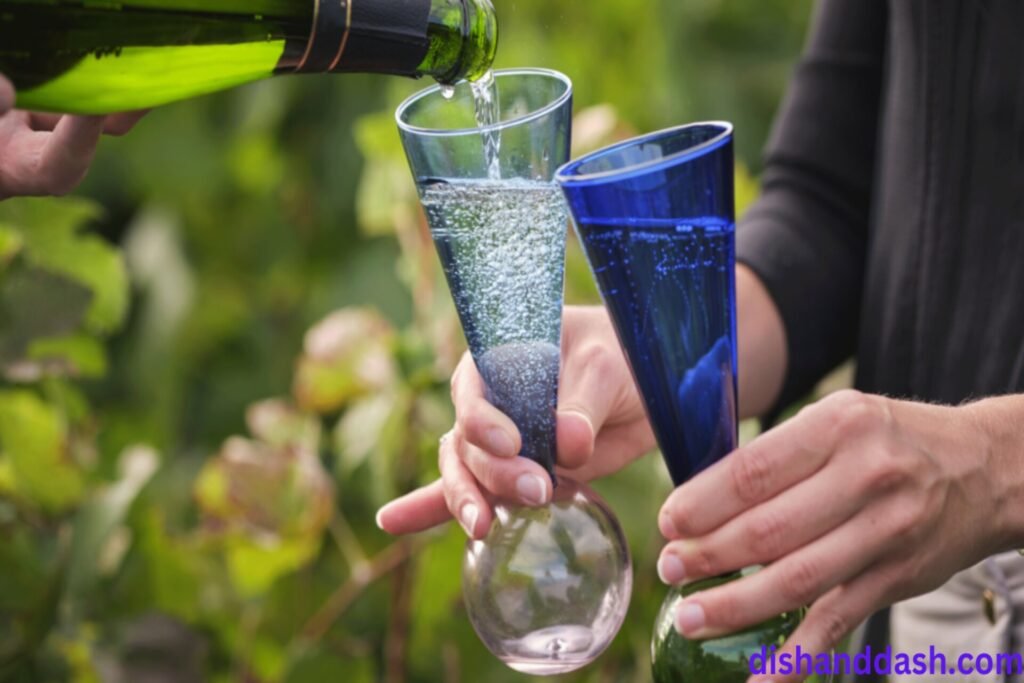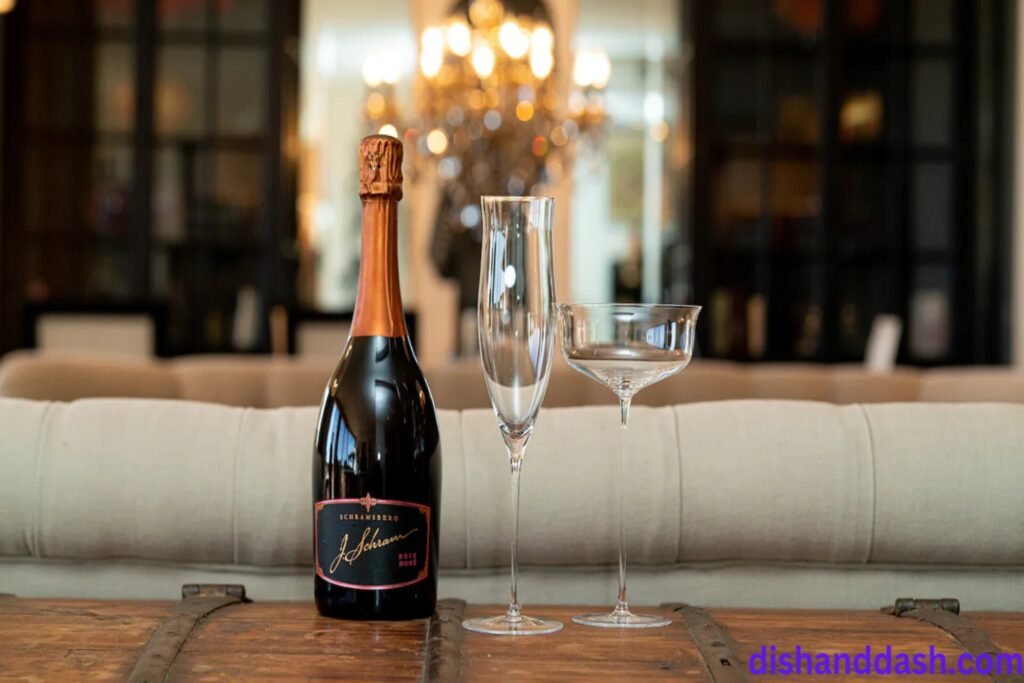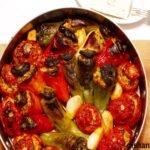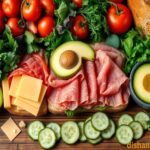The process of making champagne at home is very interesting! You will be guided step by step through every bubble including how to choose the right grape to produce the fizz. So if you’re a wine enthusiast, a Do-It-Yourself (DIY) person, or just interested in the process, come, let’s sparkle!

Table of Contents
What is Champagne?
Champagne is a sparkling wine produced in the Champagne region in France, so it was named after this place. It’s traditionally made from three types of grapes: pinot noir, pinot meunier, and chardonnay. Champagne has its differentiation as a result of the. old méthode champenoise or the secondary fermentation process used in producing carbonation. This method plays a decisive role in introducing Champagne’s great bubbles, firm acidity, and rich taste.
Essential Ingredients and Equipment
Ingredients
- Grapes: Chardonnay or Pinot Noir, Pinot Meunier, or a blend of both (about ten pounds per small batch).
- Sugar: This enables in the second fermentation process, The porridge is then mashed to help in the second fermentation.
- Yeast: For the primary fermentation, champagne yeast is recommended as well as for the secondary fermentation.
Equipment
- Fermentation Container: A large, food-safe vessel
- Wine Bottles: Champagne-grade bottles to be able to bear pressure
- Airlocks: To release gas safely
- Riddling Rack: For; Turning the bottles (optional, albeit useful).
- Corks and Cages: To well seal the bottles for aging
- Syphon or Funnel: In the service of moving wine with sedimentation at the bottom without disturbing it
Pro Tip: With champagne, they need to be very patient, but if they use the right tool and take each step carefully, then it will be very good.

Step-by-Step Guide to Making Champagne at Home
Step 1: Select and Prepare the Grapes
The nature of Champagne you are going to achieve depends on the grapes. If possible, buy fresh grapes or grape juice of Chardonnay, Pinot Noir, or Pinot Meunier types of wines needed for the champagne production.
- Crush and Press the Grapes: Squash the grapes and filter out any pulp or seeds you might find inside the grapes. If possible, use the wine grape press, though if you don’t have one, you can try to manually crush the grapes.
- Juice Preparation: Afterwards they are pressed and left to settle for 12-24 hours before being bottled. This makes any other suspended particles siphoned from the water and they sink to the bottom.
Step 2: Primary Fermentation
The first stage of fermentation turns grapes or grape juice into wine, to be considered still.
- Add Yeast: Prepared champagne yeast is then poured into the fermentation chamber containing the juice.
- Fermentation: Seal the container with an airlock and let the beans ferment at temperatures of 60- 68°F. The sugar will be fermented by the yeast thus resulting in the formation of alcohol, and carbon dioxide.
- Wait: The primary fermentation mostly takes 1-3 weeks. It will also be important to state that, as fermentation proceeds, the mixture will start to become more and more transparent.
Note: Taste the wine once the stage of fermentation is over to check whether the wine is acidic enough.
Step 3: Blending the Wine
Successful producers of champagne employ ways of mixing wines from various grapes or even different years to arrive at the desired taste. A home brewer can combine different batches, thus achieving a balanced taste, or can foster the fermentation of single grapes for a simpler process if required.
- Optional Step: To make a good wine mix, take two small glasses of each kind of wine.
- Rest the Wine: Blending or selecting individual wine should now be allowed to settle for one or two weeks before the next stage is performed.

Step 4: Second Fermentation
The second fermentation is most important in Champagne-making because it is the time when the actual magic of bubbles occurs.
Add Sugar and Yeast: Bottle the wine and then top each with a little sugar and yeast. The sugar will replace the nutrient source, which is needed for the yeast, it will produce carbon dioxide and lead to carbonation.
Seal the Bottles: Put on the corks tightly and then put a wire cage over the cork to avoid upsetting the cork due to pressure.
Wait and Store: For best results, place the bottles horizontally and put them in a cool, dark area where they cannot be reached by children. Thus this phase of the process may take about 3 months to complete.
Step 5: Riddling and Aging
Riddling is the process intended for the slow turning of the bottles to push the sediments to the neck of the bottle.
- Rotate the Bottles: Twist each bottle a little each day for 4-6 weeks. An example is a riddling rack which assists but manual turning does the same thing.
- Aging: Champagne after riddling is then left to mature for several months or maybe years before getting to the desired taste.
Step 6: Disgorging and Dosage
One final stage is called disgorging, which consists of the removal of a deposit located at the neck of the bottle.
- Freeze the Neck: Shake or unintensively throw the bottle, so the neck of it is put into the ice-salt solution. This compacting leads to the firming up of the sediment at the top.
- Remove the Sediment: Gently twist the cap as it is an excellent point to help the frozen plug to be untwisted.
- Dosage: Put just a little syrup and it will counter the taste of the Champagne.
- Cork and Cage: Twist on the cork firmly and cover it with a cage.
Conclusion
Home production of Champagne is a passionate process. From grape to glass this process takes time however the ‘pop’ of a homemade bottle of wine makes it all worthwhile! Whether you are celebrating a special occasion or. relaxing after a successful day of work, Champagne deserves to be enjoyed, fully.

FAQs
1. Can I Use Regular Wine Bottles?
No, regular wine bottles aren’t built to withstand the pressure from carbonation. Champagne bottles are specially designed to handle it, so make sure to use only authentic champagne bottles.
2. How Long Does It Take to Make Champagne?
Champagne-making is a lengthy process. Primary fermentation takes about 1-3 weeks, and secondary fermentation requires at least 3 months. For the best flavor, aging for a year or longer is ideal.
3. What Temperature is Best for Champagne Fermentation?
Primary fermentation should occur at around 60-68°F, while secondary fermentation is best at a slightly cooler 55-59°F. Consistent temperature control will improve the quality of your Champagne.
4. Can I Make Champagne Without Adding Sugar?
Technically, yes, but sugar is essential in the secondary fermentation process to create carbonation. Without sugar, your wine will remain still rather than sparkling.











1 thought on “Making Of Delicious Champagne Recipe2024”